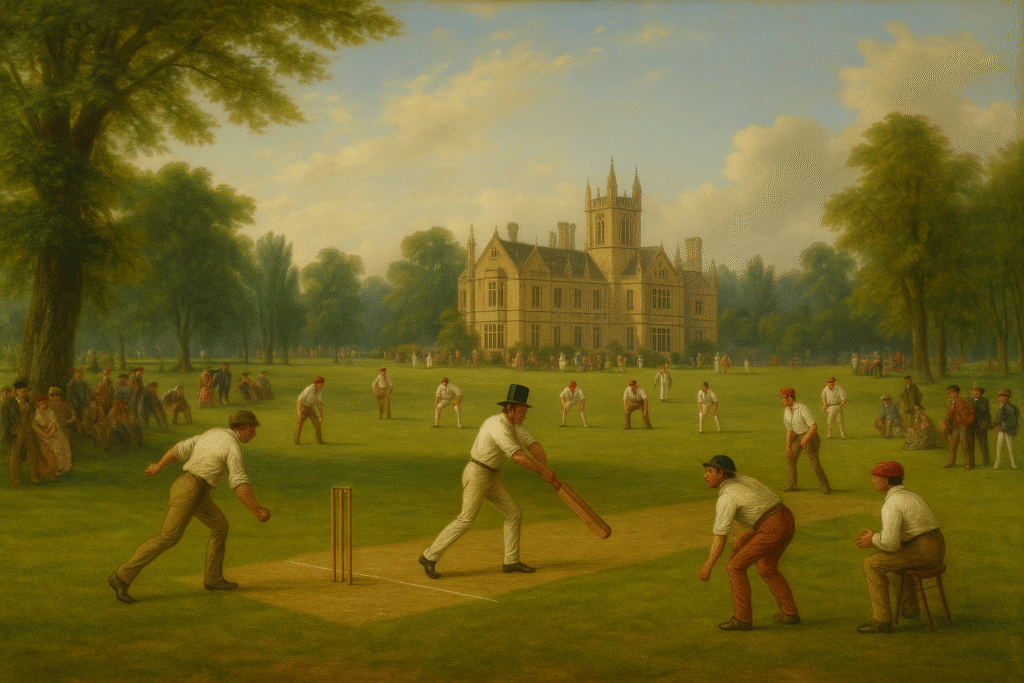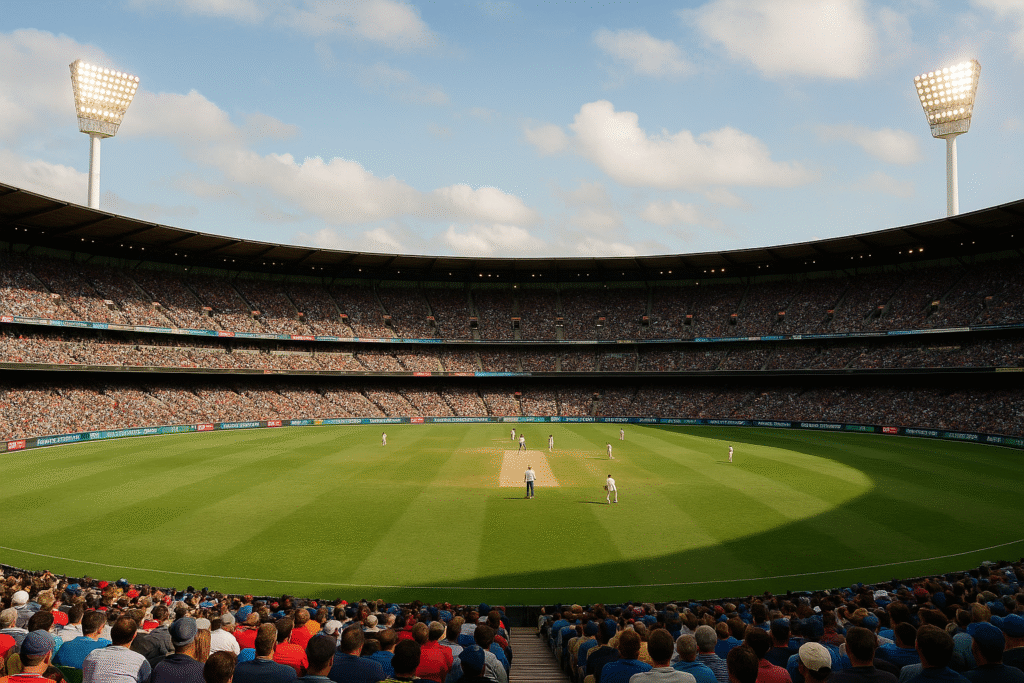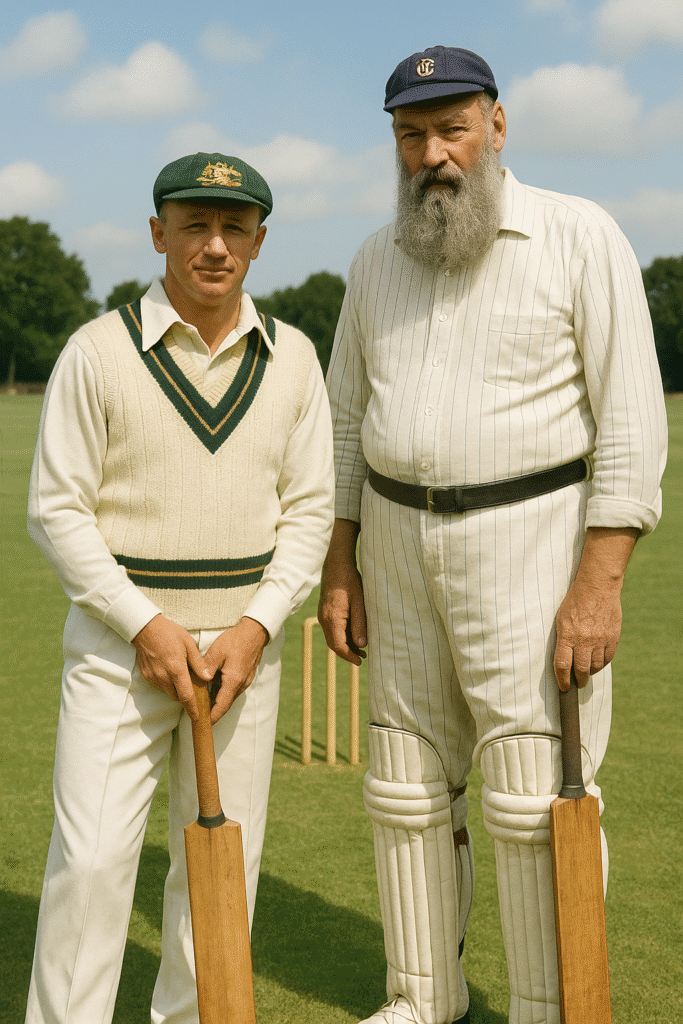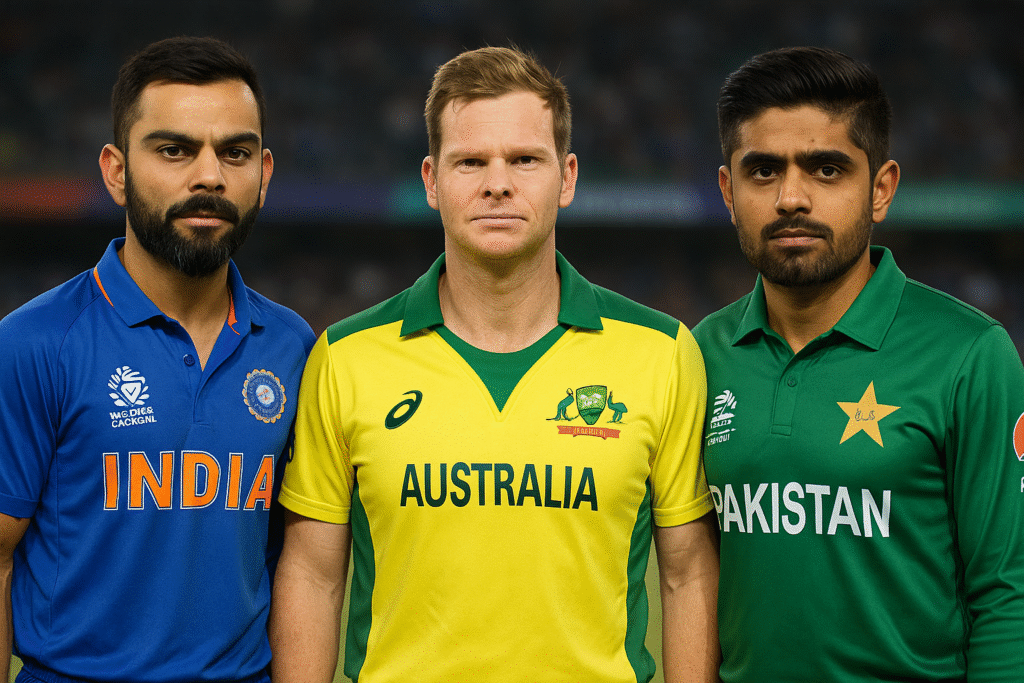From open fields in England to packed stadiums around the world, cricket has transformed into a true global phenomenon. Cricket traces its origins back to England in the 16th Century, eventually becoming the nation’s top sport by the late 1700sicc-cricket.com. British sailors, soldiers and traders then carried the game overseas, sparking the sport’s international expansionicc-cricket.comicc-cricket.com. Today it is a beloved sport in dozens of countries, fueled by spectacular global tournaments and legendary players known across continents.

Origins of Cricket in England
A Victorian-era painting of a cricket match at Canford Manor, England (1855) shows early it’s history in action. England’s version of bat-and-ball games evolved over centuries. The earliest known reference dates from 1611, already describing it as a sport for adults. (Some sources suggest even earlier Saxon origins.) By the 17th century, villagers and county teams were regularly playing on village greens.

A key milestone came in 1744 with the creation of the first formal Laws. In 1787, the Marylebone Cricket Club (MCC) at Lord’s became the custodian of these rules. By the late 18th century, the sport had become England’s national pastime. Competitive county matches, codified laws, and the emergence of stars like W.G. Grace in the 1860s laid the foundation for the modern game. England hosted and won the first official Test match in 1877, marking the beginning of international play.
Cricket Spreads Through the British Empire
As the British Empire expanded, so did its beloved bat-and-ball sport. British sailors, soldiers, and administrators introduced the game to colonies across Asia, the Caribbean, Africa, and Australasia. It was being played in India and the West Indies as early as the 18th century. The pastime also reached Canada, Australia, and New Zealand by the early 1800s, where local clubs and regional tournaments soon emerged.
Railways and touring teams played a key role in spreading the game’s appeal. The All-England Eleven toured Britain from 1846, while British regiments stationed overseas competed with locals. These interactions embedded the sport into colonial societies, where it became a central part of cultural life. By 1900, it was firmly rooted across the Commonwealth, setting the stage for its global rise.
You can also read about History of Sports
From Colonial Sport to Global Cricket
Cricket’s transformation into a structured global sport began in the 19th century. The first international match occurred in 1844 between the USA and Canada. English teams toured North America in 1859 and Australia in 1862. In 1877, the historic first Test match between England and Australia marked a new era.

The Ashes rivalry began in 1882, and South Africa joined the Test arena in 1889. The formation of the Imperial Cricket Conference (now the International Cricket Council, or ICC) in 1909 brought structure. Test status followed for the West Indies (1928), New Zealand (1930), India (1932), and Pakistan (1952). Women’s cricket grew too, with the first Women’s Test in 1934 and the inaugural Women’s World Cup in 1973.
Domestic competitions like England’s County Championship, Australia’s Sheffield Shield, and India’s Ranji Trophy (since 1934) further developed cricket talent and fed international squads.
Rise of Modern Cricket Tournaments
Modern cricket thrives on fast-paced tournaments and global fanfare. The ICC launched the first Men’s Cricket World Cup in 1975 (ODI format), turning the 50-over event into the sport’s top international tournament.

Notable modern tournaments include:
- ICC Men’s Cricket World Cup (ODI): Since 1975.
- ICC Men’s T20 World Cup: Debuted in 2007.
- Indian Premier League (IPL): Launched in 2008.
- ICC Champions Trophy: Introduced in 1998.
- ICC Women’s Cricket World Cup: Began in 1973.
- The Hundred: England’s 100-ball format, launched in 2021.
Bright uniforms, nighttime matches, and innovations like the Decision Review System (DRS) and Powerplays have made cricket more accessible and entertaining.
Legendary Cricketers and Global Icons

Throughout its history, cricket has produced unforgettable heroes. C, with a staggering Test average of 99.94, and W.G. Grace of England were early icons. The West Indies’ Viv Richards, Malcolm Marshall, and Clive Lloyd dazzled in the late 20th century.

India’s Sachin Tendulkar, the highest run-scorer in international tournament, became a household name. Sri Lanka’s Muttiah Muralitharan, with 800 Test wickets, redefined spin bowling. Modern greats like Virat Kohli (India), Steve Smith (Australia), and Babar Azam (Pakistan) continue the legacy. Spinners like Shane Warne and Rashid Khan, and fast bowlers like Glenn McGrath and Wasim Akram, captivated fans worldwide.
Emerging nations also shine. Ireland’s Kevin O’Brien made headlines in the 2011 World Cup. Afghanistan’s Rashid Khan is a T20 superstar. From Lords in London to the Narendra Modi Stadium in Ahmedabad, cricket’s heroes inspire millions.
Conclusion: A Beloved Sport for the World
Cricket’s journey from English fields to international stadiums is a testament to its enduring appeal. It began as a game among villagers, spread through colonial routes, and evolved into a multi-format sport governed by the ICC. Along the way, it has united nations, created unforgettable memories, and produced legends whose names echo across time.
Today, it is more than a game — it is a global celebration of talent, strategy, and shared history.
You can also read about olympic
Sources: Authoritative histories and ICC recordsicc-cricket.comicc-cricket.comicc-cricket.comicc-cricket.comicc-cricket.com, archives and statistics from Wisden and ESPNcricinfo.

Pingback: Champions of IPL 2025